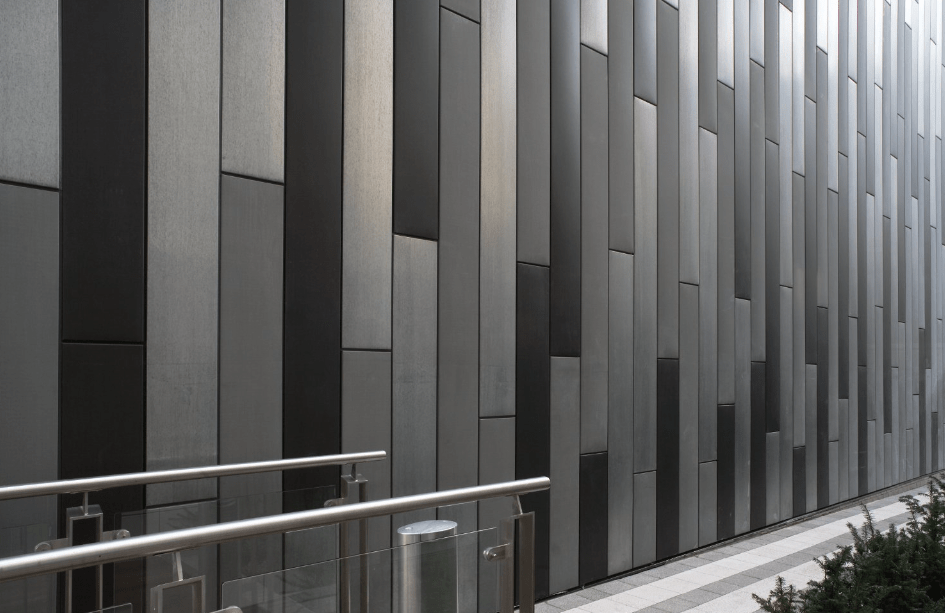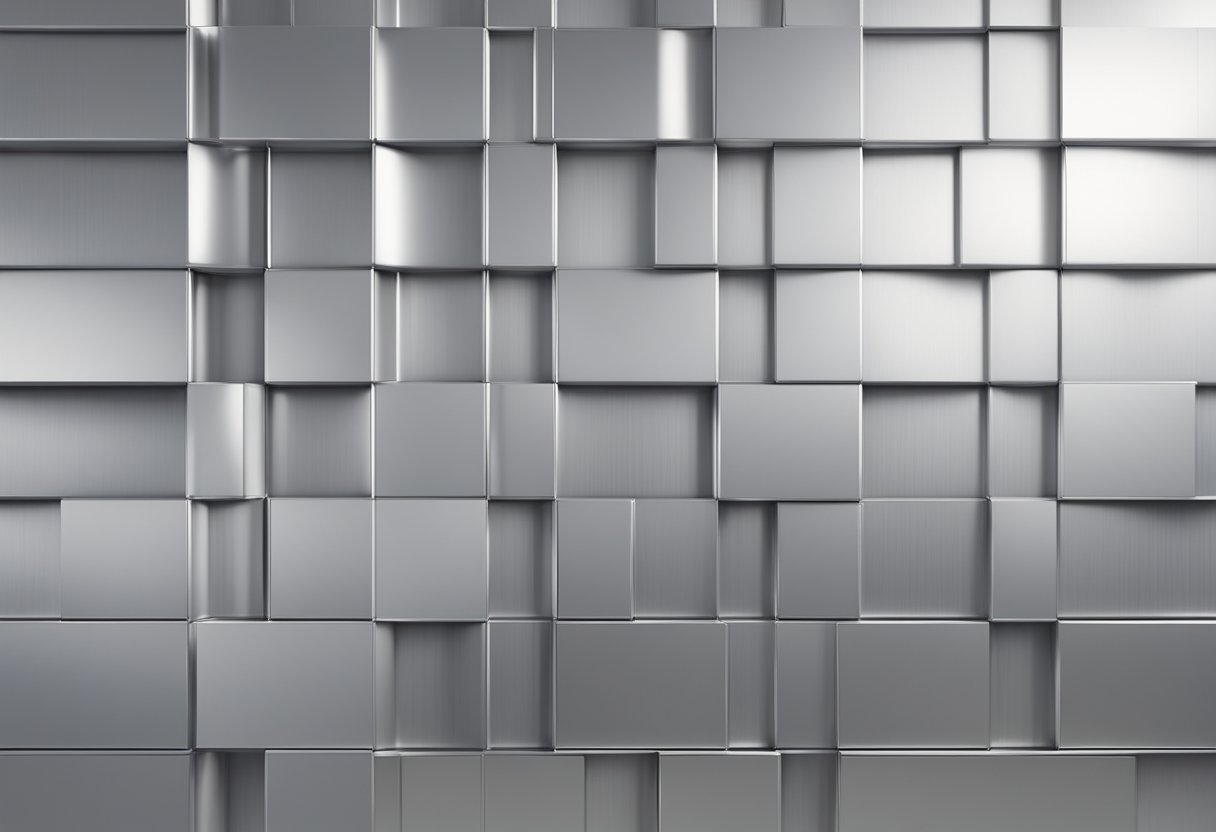If you’re looking for a modern and sleek way to add aesthetic appeal to your building, aluminum panel wall systems might be the perfect solution. These panels are made from lightweight aluminum, which makes them easy to install and maintain. They are also incredibly durable and long-lasting, making them a great investment for any building owner.

Aluminum panel wall systems come in a variety of styles and finishes, so you can choose the perfect look for your building. Some popular finishes include brushed aluminum, anodized aluminum, and painted aluminum. You can also choose from a range of panel sizes and shapes, allowing you to create a unique look that perfectly fits your building’s design. With so many options available, you’re sure to find a look that you love.
In addition to their aesthetic appeal, aluminum panel wall systems offer a range of practical benefits. They are incredibly weather-resistant, which means they can withstand harsh weather conditions without fading or deteriorating. They are also fire-resistant, which can help protect your building in the event of a fire. Plus, their lightweight design makes them easy to install and maintain, which can save you time and money in the long run.
Fundamentals of Aluminum Panel Walls

If you’re looking for a durable and versatile building material for your next construction project, aluminum panel walls are an excellent choice. These panels are made from solid aluminum sheets that are bonded to a thermoplastic core, creating a lightweight, yet sturdy material that can be used for a variety of applications.
One of the key advantages of aluminum panel walls is their versatility. They can be used for both interior and exterior applications, and are available in a wide range of colors, finishes, and patterns. This makes it easy to create a custom look for your building that matches your design aesthetic.
Another advantage of aluminum panel walls is their durability. They are resistant to weathering, corrosion, and impact, making them ideal for use in areas with harsh environmental conditions. Additionally, they require minimal maintenance, which can save you time and money over the life of your building.
When it comes to installation, aluminum panel walls are relatively easy to work with. They can be cut to size using standard tools, and can be installed using a variety of methods, including mechanical fasteners and adhesives. This makes it easy to create a seamless, uniform look for your building.
Overall, aluminum panel walls are a reliable and cost-effective building material that can provide long-lasting performance and durability. Whether you’re building a new structure or renovating an existing one, aluminum panel walls are a versatile and attractive option that can meet your needs.
Design Considerations

When designing an aluminum panel wall system, there are several key considerations you should keep in mind. These include the aesthetic aspects of the system, its structural integrity, and its thermal performance.
Aesthetic Aspects
The appearance of an aluminum panel wall system is a critical consideration. These panels are available in a wide range of colors and finishes, allowing you to create a customized look that complements the surrounding environment. You can choose from a variety of textures, such as wood, stone, and metal, to achieve the desired aesthetic effect.
Structural Integrity
The structural integrity of an aluminum panel wall system is a crucial factor to consider. These panels must be able to withstand the forces of nature, such as wind, rain, and snow. They must also be able to support their own weight and any additional loads, such as signage or lighting. To ensure the structural integrity of the system, it is essential to work with a qualified engineer or architect who can assess the design and provide guidance on the appropriate materials and installation methods.
Thermal Performance
The thermal performance of an aluminum panel wall system is another critical consideration. These panels must be able to provide adequate insulation to keep the interior of the building comfortable and energy-efficient. The thermal conductivity of aluminum is relatively high, so it is essential to choose the appropriate insulation material and thickness to achieve the desired level of thermal performance. You can use tables and charts to compare different insulation materials and their insulating properties to select the best option for your project.
Overall, designing an aluminum panel wall system requires careful consideration of several key factors. By taking into account the aesthetic aspects, structural integrity, and thermal performance of the system, you can create a functional and visually appealing facade that meets the needs of your project.
Installation Process
Tools and Materials
Before you begin the installation process for aluminum panel walls, it’s important to make sure you have all the necessary tools and materials. Here’s a list of what you’ll need:
- Aluminum panels
- Measuring tape
- Circular saw or jigsaw
- Drill
- Screws
- Sealant
- Safety equipment (gloves, goggles, etc.)
Step-by-Step Guide
- Measure the area where you’ll be installing the aluminum panels. Make sure to account for any doors, windows, or other obstructions.
- Cut the aluminum panels to the appropriate size using a circular saw or jigsaw. Make sure to wear safety equipment, such as gloves and goggles, during this step.
- Drill holes into the aluminum panels where you’ll be attaching them to the wall. Make sure to space the holes evenly and use the appropriate size drill bit.
- Attach the aluminum panels to the wall using screws. Make sure to use the appropriate type of screw for your specific wall type.
- Apply sealant to the edges of the aluminum panels to prevent moisture from getting behind them. Make sure to use a high-quality sealant that’s designed for use with aluminum.
- Repeat steps 2-5 until you’ve covered the entire area with aluminum panels.
Overall, the installation process for aluminum panel walls is relatively straightforward. With the right tools and materials, you’ll be able to complete the installation process quickly and easily. Just make sure to take your time and follow the steps carefully to ensure a high-quality installation.
Types of Aluminum Panel Walls
If you are planning to use aluminum panel walls for your building project, you have a few options to choose from. Here are the three main types of aluminum panel walls:
Flat Panels
Flat panels are the simplest type of aluminum panel walls. They are made from a single sheet of aluminum that is typically 1/8 inch thick. Flat panels are available in a variety of sizes and colors, and they can be cut to fit any shape or size. They are commonly used for interior walls, ceilings, and exterior facades.
Composite Panels
Composite panels are made from two sheets of aluminum that are bonded to a core material. The core material can be made from a variety of materials, including polyethylene, polyurethane, or fire-resistant mineral core. Composite panels are lightweight and strong, and they are available in a variety of colors and finishes. They are commonly used for exterior facades, cladding, and roofing.
Honeycomb Panels
Honeycomb panels are made from two sheets of aluminum that are bonded to a honeycomb core material. The honeycomb core material is typically made from aluminum or aramid, and it provides excellent strength and rigidity. Honeycomb panels are lightweight and durable, and they are commonly used for exterior facades, cladding, and roofing.
Overall, each type of aluminum panel wall has its own advantages and disadvantages. It is important to choose the right type of panel for your specific project based on factors such as cost, durability, and design.



